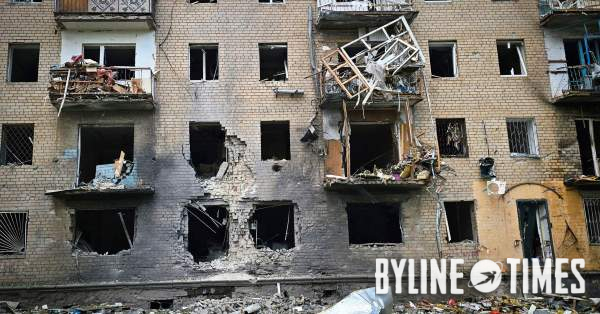Drones, once primarily used for surveillance, have evolved into weapons for hunting human targets in Ukraine.
During June and July, the Russian military dramatically increased drone attacks on civilians in the Kherson region, with the last two weeks breaking all records. Estimates suggest 50 people have been killed or injured in the attacks.
In the port city of Kherson, drones patrol the skies, hovering over devastated coastal suburbs and villages, searching for an old lady with a bucket here or a teenager on a bicycle there—to eliminate by dropping explosives.
“We’ve got something new here,” said Olha, a grocery store owner in Kherson. “It’s called skid, literally ‘a drop’.”
-
Daily skid statistics are terrifying: on 24 July, a Russian drone dropped explosives on a woman in Romashkove village, hospitalising her with blast and cranial injuries and shrapnel wounds to her legs.
-
The same day, a private house in Kherson’s suburbs caught fire after a skid attack. While firefighters were extinguishing the fire, a second drone attack damaged the fire truck with shrapnel. And in Kherson city, a drone attack on a 57-year-old woman, left her with a concussion, leg wound, and blast injuries.
-
The following day, two drones struck residents in the suburb of Kindiyka, injuring a couple and killing a 51-year-old man.
-
In Antoniivka, another suburb, a drone attacked a vehicle carrying humanitarian aid, injuring the driver, and another, later that day, wounded a 72-year-old woman. A resident of Sadove village, also 72, suffered blast trauma, concussion, and shrapnel wounds to his forearm after a drone attack.
Hiding under a tree in front of her high rise, Tatiana pointed out broken windows and shattered doors. For two months, drones have been patrolling the skies over her home, dropping explosives on civilian cars and people.
[Edit typo.]



“Loitering ammunition”… I heared very similar descriptions from people in the Afghan border region in Pakistan all the way back in 2010. “Double tapping” the people that came to help after a first strike was also a popular tactic.